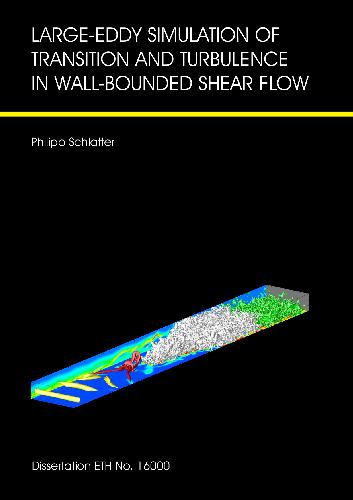Schlatter P.
Large-eddy simulations (LES) of transitional anil turbulent wall-bounded incompressible flow have been performed. A special focus has been oil the reliable and efficient modelling of laminar-turbulent transition in plane channel flow at low resolutions, for which several subgrid-scale (SGS) models have been evaluated, including the approximate deconvolution model (ADM) and related approaches, classical and high-pass filtered (HPF) eddy-viscosity models, and dynamic models. The simulations have been performed in both the temporal and spatial transition framework.The results show that a direct modelling involving a relaxation reg-ularisation (ADM-RT model) provides the most accurate results for both transitional quantities and turbulent statistics. By use of three-dimensional visualisation of instantaneous flow structures it is investigated how well the SGS nioilels on coarse grids are able to predict the physically relevant mechanisms at successive stages of transition: Λ-vortices, rollup of shear layers, and hairpin vortices. The results show that the ADM-RT model predicts similar transitional structures as present in fully resolved direct numerical simulation (DNS) data, however using less than one percent of the numerical resolution of the latter. Other SGS nioilels are not capable of predicting these physical structures at the chosen coarse resolution.Additionally, the different SGS models have been examined in homogeneous isotropic turbulence. The nioilels provide an accurate prediction of the energy and dissipation spectra even for high Reynolds numbers.A Fourier method based on a windowing approach to prescribe non-periodic inflow and outflow boundary conditions has been formulated and evaluated. Test cases involving a travelling vortex core and a spatially developing jet have shown very good outflow damping properties. The spectral accuracy of the underlying numerical scheme is retained. The. windowing approach has been compared to the well-established fringe method. | |

Reviews
There are no reviews yet.